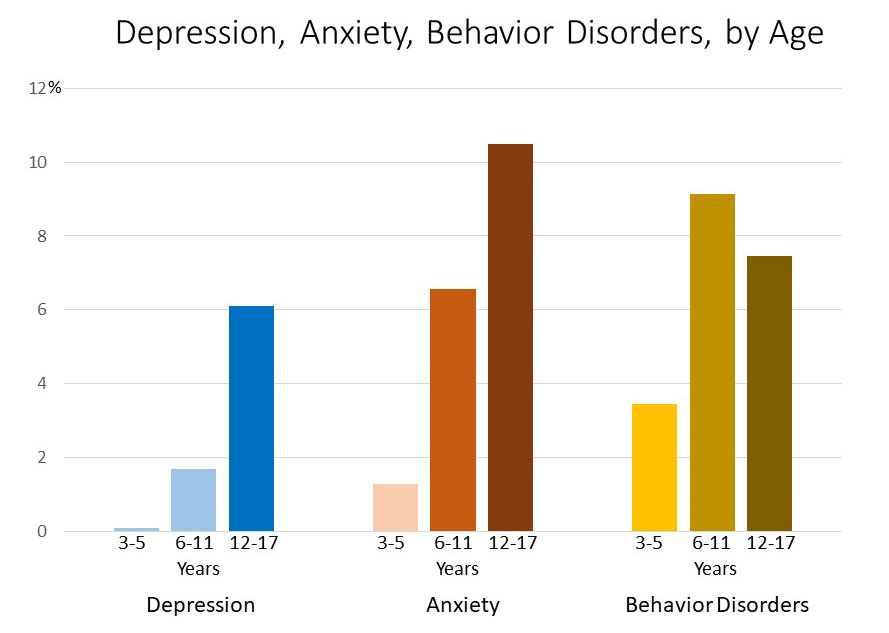It’s Not Easy Being Young

Today’s youth face a litany of challenges on their way to adulthood. But luckily there are ways to help.
We often hear the expression “the joys of childhood.” But sometimes childhood can be anything but joyful. In fact, it’s hard being a kid today.
Not only are there the usual issues – peer pressure, growing pains and struggling to fit in – but there are outside factors beyond children’s control: mental health and economic issues, food insecurity, housing insecurity, lack of access to critical services and other issues. These issues are barriers to living a happy, healthy life and have been exacerbated during the COVID-19 pandemic.
“Many challenges that kids are facing right now are the same they were facing before the pandemic,” says Erica Fener Sitkoff, the executive director of Voices for Georgia’s Children (Voices). “We went into the pandemic with hundreds of thousands of children in Georgia facing food insecurity and housing insecurity. What we are layering onto that with the pandemic is loss of instruction, social isolation and grief and loss.”
In other words, it’s been a tough year.
All of these issues can take a toll on children’s mental health, causing sadness, stress, depression and anxiety. According to a 2020 Georgia Department of Education anonymous survey of kids in grades 6-12 across the state, more than 113,000 youth reported wanting to seriously harm themselves in the past 12 months. Of those, close to 80,000 seriously considered attempting suicide.
The news gets worse. Measure of America, a project of the Social Science Research Council, tracks “disconnected youth” – defined as those between the ages of 16 and 24 who are neither in school nor employed. The organization reports that 11% of youth – or 4.3 million young people – are disconnected in the U.S. today.
“Being disconnected leads to lower wages, higher lifetime unemployment and greater contact with the criminal justice system,” says Kristen Lewis, director of Measure of America. “In that way, it affects all of society. It means lower tax revenue, higher health and criminal justice costs and reduced competitiveness for the country.”
The good news is that there are things adults can do to help – both individually and through organizations and programs – to address and alleviate these challenges.
Addressing Mental Health Needs
“There is not one community in Georgia that is not impacted by mental health issues,” says Sitkoff. “Kids are feeling sad, stressed, angry and overwhelmed. It impacts their functioning every day, their ability to concentrate, their motivation, as well as their ability to maintain friendships and relationships.”
According to the Centers for Disease Control, children of all ages – even as young as two – struggle with mental health issues. Those include autism, attention deficit disorder, depression, anxiety and substance abuse disorder. Left untreated, those disorders can have negative long term effects: drug and alcohol abuse, violent or self-destructive behavior, poor academic achievement and lower employment rates in adulthood.

These issues can be caused or exacerbated by larger issues: poverty, homelessness, food insecurity, and more recently factors created by the pandemic.
“If these issues are not addressed,” Sitkoff says, “they will only get worse. These problems don’t typically go away without intervention.”
Not only do young people suffer, but unfortunately, they have limited help. According to Voices, 41% of Georgia’s young people between the ages of 3-17 struggled to find necessary mental health treatment in 2019 because of a shortage of professional providers trained to treat children, an inability to pay and/or lack of access.
Fortunately in Georgia, there are several programs that can help with mental health.
- “Free Your Feels” – Last September, Voices and the Georgia Department of Behavioral Health and Developmental Disabilities (DBHDD) created this mental health awareness campaign that “encourages Georgia’s young people to explore their real feelings and share them fearlessly” and connect with their peers and resources to support them. The easy to use website is segmented based on the needs of the audience, which includes parents, teens and teachers. Sitkoff encourages everyone to visit freeyourfeels.org and follow it on social media to receive messages and resources about mental health. There are also two apps that can be downloaded to access support 24/7 – MyGCAL and notOK.
- Sources of Strength – a national suicide program that focuses on peer networks to prevent suicide, bullying and substance abuse. The program is currently in 88 middle and high schools in Georgia.
- Georgia APEX Program – Funded by the DBHDD, this school-based mental health program aims to increase access to mental health services for youth from Pre-K to 12th grade. Since the program began four years ago, it has been established in more than 700 schools across the state.
Keeping Youth Connected
Measure of America found that the disconnected youth rate in Georgia is 12.6%, above the national average. Contributing factors include poverty, race, ethnicity, attending an under resourced school and poor economic conditions.
“Being disconnected has long-term scarring effects; it can cast a shadow across your whole life and lead to a lower trajectory of achievement,” Lewis says. “The longer you are disconnected, the worse the outcomes.”
According to Lewis, there are huge gaps by race and ethnicity – 16% of Black youth in Georgia are disconnected, as are 11% of Latino youth and 10% of white youth. There are also higher disconnect rates in rural counties – sometimes up to 50%.
Lewis acknowledges that youth that are disconnected need help to get them out of the cycle, but the best way to solve the problem is to prevent it from happening in the first place.
“We need to keep young people connected,” she says, “and get them off to a good start to stay in school and build a clear pathway from high school to college, technical programs or employment.” She offers these tips:
- Help parents promote healthy childhood development. That includes reaching out to at-risk parents (those who are young, have less education and are living in poverty) to support them in developing or enhancing their parenting skills through programs like the Georgia Nurse-Family Partnership.
- Support early childhood care. Research shows high quality center-based early childhood care and preschool leads to a higher rate of high school graduation, less contact with the juvenile justice system, fewer behavioral problems, higher wages and less unemployment – especially for at-risk kids.
- Focus on keeping youth in school. By eighth grade the early warning signs of dropout (frequent absences, repeating a grade, failing more than one class) are already there, so it’s important to identify kids early and start helping them academically, because once they’ve left school it is harder to bring them back.
- Involve the business community. Employers can support young workers by offering training, mentorship, tuition reimbursement and assistance for transportation to help them stay employed.
Taking an “All In” Approach
The challenges children face are not in isolation; they all are interconnected, and solving them takes a concerted, coordinated effort. Cities and communities can play a role in this.
![]()
“When looking at health and wellness, the focus should be holistic,” says Sue Pechilio Polis, director, health and wellness at the National League of Cities’ Institute for Youth, Education and Families. “We should also filter them through social determinants – access to quality education, jobs, transportation and adequate housing. We need to address the root issues and have alignment across city agencies and their partners. Meeting those needs requires an ‘all in’ approach.”
Sitkoff agrees. “If you only address one area of child well-being, you will consistently hit a ceiling in terms of how much progress you make.”
Polis suggests cities utilize systems mapping as an approach to addressing some of these issues. This involves examining what policies, programs and systems are already in place and making sure they are aligned to get people the resources they need to improve quality of life.
“When cities take a holistic, comprehensive approach, a lot of these problems can be solved,” Polis says. “It becomes more feasible when you have a coalition of people willing to step up and work across agencies/systems. Having partners at the table with expertise creates momentum, and the buy in is there to forge ahead.”
“Partnerships are important because every area in society is dealing with these issues,” adds Sitkoff. “It’s an opportunity for all of us to join forces and come together to do something about it.”
Sara Baxter is a freelance writer based in Decatur, GA. She specializes in telling stories for nonprofit organizations.
Georgia Municipal Association anticipates and influences the forces shaping Georgia’s cities and provides leadership, tools, and services that assist municipal governments in becoming more innovative, effective and responsive.
